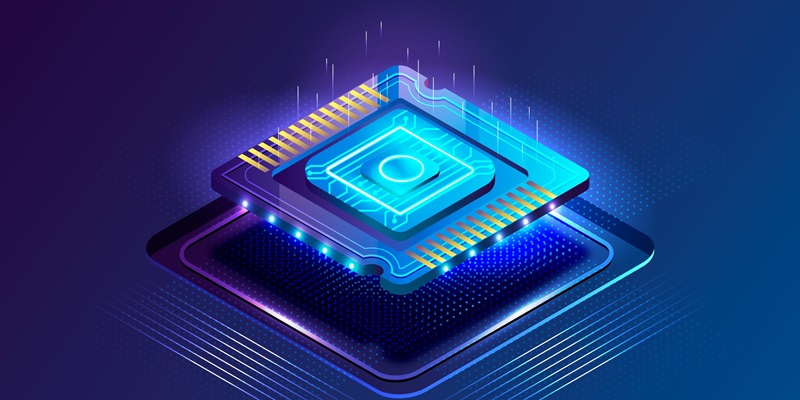Intel is gearing up to release its refreshed Sapphire Rapids Xeon W-3500 and W-2500 workstation CPUs, bringing slight updates to the core counts. Building upon the success of the Xeon W-3400 and Xeon W-2400 CPU families, the latest additions will continue to utilize the powerful Golden Cove P-Core architecture. Let’s delve into the details of these processors and explore how they fare against the competition.
Golden Cove P-Core Architecture and Relevance
The Sapphire Rapids Xeon W-3500 and W-2500 CPU families are based on the cutting-edge Golden Cove P-Core architecture. This architecture is renowned for its outstanding performance, energy efficiency, and advanced capabilities. With this technology at their core, users can expect a seamless and powerful computing experience.
Detailed Specifications of Xeon W-3500 CPU Lineup
The Xeon W-3500 CPU lineup offers a range of options to meet varying computing needs. The flagship model, the Xeon W9-3595X, boasts an impressive total of 60 cores and 120 threads. Following closely are the Xeon W9-3575X with 44 cores, W7-3565X with 32 cores, W7-3555 with 28 cores, W7-3545 with 24 cores, W5-3535X with 20 cores, and W5-3525 with 16 cores. Each processor brings enhanced multitasking capabilities, ensuring the smooth handling of complex workloads.
TDP Range and Clock Speeds
With TDPs ranging from 290W to 350W, the Xeon W-3500 CPUs emphasize powerful performance. The clock speeds across the lineup vary from 2.2 to 3.2 GHz, enabling efficient and responsive computing across a broad spectrum of applications.
Core Count Uplift in Xeon W-3500 Lineup
Notably, all Xeon W-3500 SKUs, excluding the W9-3575X, enjoy a core count uplift of 4 cores. This uplift enhances the processors’ ability to handle demanding workloads, offering improved productivity and performance. The W9-3575X, in particular, sees a remarkable increase of 8 cores, further elevating its capabilities.
Introduction to Xeon W-2500 ‘Sapphire Rapids-64L’ Refresh CPU Family
Joining the Xeon W-3500 lineup is the Xeon W-2500 ‘Sapphire Rapids-64L’ refresh CPU family. This family offers at least 7 SKUs, providing users with a diverse range of options to cater to their specific computing requirements.
Core Count Bump in Xeon W-2500 Family
Similar to the Xeon W-3500 lineup, the Xeon W-2500 family also receives a core count bump. This enhancement boosts the processors’ overall performance, ensuring efficient multitasking and improved productivity.
Compatibility and DDR5-4800 Memory Support
All Xeon W-3500 and Xeon W-2500 CPUs are compatible with existing W790 HEDT and workstation motherboards. This compatibility ensures a seamless upgrade path for users while retaining the benefits of their current systems. Additionally, these CPUs support DDR5-4800 memory, enabling faster data transfer and enhanced system responsiveness.
Pricing Expectations
As a reminder, it is anticipated that Intel will price the Xeon W-3500 and Xeon W-2500 CPU families close to their predecessors, the W-3400 and W-2400 SKUs. This pricing strategy aims to offer users incremental improvements without a significant impact on their budget.
When compared to AMD’s Threadripper platform, Intel’s Sapphire Rapids Xeon W-3500 and W-2500 CPUs offer notable enhancements. However, AMD’s Threadripper families remain a more disruptive platform. AMD’s offerings boast up to 96 cores and 192 threads, faster DDR5 memory support, unlocked OC design across all SKUs, an extensive number of Gen5 PCIe lanes, and outstanding support on the TRX90 and WRX90 motherboard platforms. These features make AMD’s Threadripper platform a compelling choice for users seeking unprecedented levels of performance and scalability.
In conclusion, Intel’s upcoming Sapphire Rapids Xeon W-3500 and W-2500 workstation CPUs present an exciting refresh with enhanced core counts. These processors, built on the Golden Cove P-Core architecture, promise improved performance, energy efficiency, and multitasking capabilities. With compatibility with existing systems and support for DDR5-4800 memory, Intel aims to offer an effortless upgrade path for users. However, AMD’s Threadripper platform continues to exert dominance with its impressive core counts, faster memory support, and advanced I/O capabilities. Ultimately, the choice between these platforms will depend on individual computing requirements and priorities.

